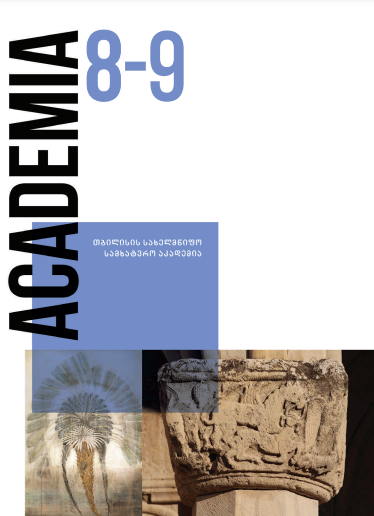Leniniana – the Forgotten Phantom of Georgian Painting

Abstract
In 1920s, in the Soviet Union including Georgia the name of Vladimir Lenin became the herald of a new propagandistic culture. It is impossible to imagine the Soviet culture of totalitarianism without the phenomenon of Leniniana – a project that was based on a cult of a leader. This conjunctural project was launched in mid1920s, however official collections were formed a bit later, in the 1930s. Leniniana was related to the privileged artistic circles which united a small group of famous, well-paid, influential artists with connections to the official authorities. Unlike thousands of the ordinary artists, these propagandist elite enjoyed monopoly on procuring and distributing the profitable state commissions and awards. However, regardless of social hierarchy the Soviet Leniniana required from the artists to strictly follow certain common iconography.
Universal standardization of Lenin’s image led to industrial production of Leniniana paintings which were created by several generations of artists in culturally differentiated fraternal republics. The unified art of Leniniana should have served as a basis for cultural consolidation of multinational Soviet Union. It is noteworthy to mention that these were not artistic but the social categories of Leniniana (which had become a kind of lever for cultural politics) that became worth of paying attention – a fact that is not surprising if we consider its contribution to the ideological upbringing which made it an essential feature of the Soviet culture.
Formed under the auspices of the Socialist Realism, the “Georgian Soviet Art” was not based solely on unsightly ballast of mass production as many talented professional artists were interested in nomenclative thematic too. Their creative work determined the artistic significance of commissions made by the Communist Party, since ideology and local experience of artistic expression were organically merged in the best propagandistic works.
In Georgia the normative schemes for Leniniana paintings were “selective” in nature. The preference was given to certain thematic frameworks and ideological focus of the art works was altered according to the history of the regional Communist Party. Iconographic images originating from the metropolis of Moscow were “replaced” by cultural codes of Georgia. The latter feature is particularly noticeable in Leniniana paintings which initially included imitative elements that were later replaced with original creative content. Despite long-standing “Leninian” interventions, Leniniana did not manage to become part of the national identity in Georgian art.